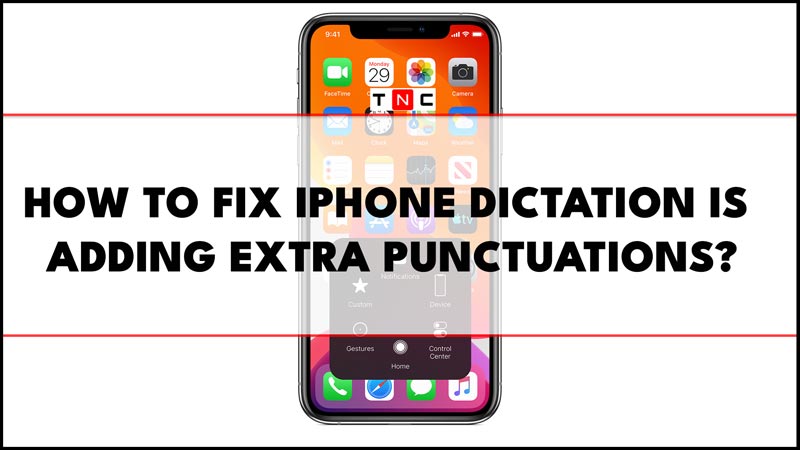The iPhone’s dictation is probably the most used feature on iPhone as it conveniently helps you to write error-free phrases. But after the recent iOS 16 update you might have noticed that your iPhone adds extra commas or punctuation in the unwanted places. This is because of the new auto-punctuation feature on iOS 16 that aims to make dictation more natural and convenient. However, it’s not effective as it should be. So, to fix this iPhone Dictation is adding extra punctuation issues, this guide will help you.
How to Fix iPhone Dictation Adding Extra Punctuation Issue?
You can disable Auto-Punctuation and Smart Punctuation features to fix the extra punctuation issue on your iPhone. But once you turn off these features, you will have to manually say “comma”, “period”, “question mark”, and other punctuation marks when you dictate. Here’s how you can disable Auto-Punctuation and Smart Punctuation:
1. Disable Auto-Punctuation

Auto-punctuation is the feature that might cause your iPhone to add extra punctuation even in unnecessary places. If you speak too fast or slow, or have an accent or a speech impediment, the iPhone may misinterpret your pauses as punctuation cues. Also, auto-punctuation may not work well with some types of texts, such as lists, addresses, codes, or names. So, the best solution to fix this issue is to disable the Auto-punctuation feature, and here’s how you can do it:
- Firstly, open Settings > General on your iPhone.
- Then tap the Keyboard tab.
- Finally, turn off the ‘Auto-Punctuation’ toggle.
2. Disable Smart Punctuation

If turning off the Auto-Punctuation doesn’t solve the issue you can also try disabling Smart Punctuation. It is another feature that automatically inserts quotation marks, dashes, and ellipses based on your speech, and here’s how you can disable it:
- Firstly, go to Settings > General > Keyboard on your iPhone.
- Then scroll down to Dictation and tap on it.
- Finally, tap the ‘Smart Punctuation’ toggle to turn it off.
Use Dictation more effectively and efficiently
Dictation can be a great way to save time and effort when typing on your iPhone, but it can also be frustrating if it doesn’t work as expected. So, here are some tips on how to use dictation more effectively and efficiently on your iPhone:
- Speak clearly and at a normal pace. Dictation works best if you enunciate well and avoid mumbling or slurring your words.
- Use a headset or earphones with a microphone. This can improve the sound quality and reduce background noise that may interfere with dictation.
- Check your text before sending or saving it. Dictation may sometimes make mistakes or misunderstand what you say, so it’s always a good idea to proofread your text before sending or saving it. Also, you can tap on any word underlined in blue to see alternative suggestions.
- Use emojis by voice. One of the cool features of iOS 16 dictation is that you can insert emojis by saying their names. For example, you can say “smiley face”, “thumbs up”, “heart”, etc., and the corresponding emoji will appear in your text.
- Switch between typing and speaking freely. Another cool feature of iOS 16 dictation is that you can alternate between typing and speaking without interrupting the dictation process. You can type some words, then resume speaking, then type again, etc., and the text will flow seamlessly.
That’s everything covered on how to fix iPhone Dictation is adding extra Punctuation issue. Also, check out our other guides, such as How to clear word suggestions on iPhone or How to fix iPhone Xs won’t connect to Mac issue.
